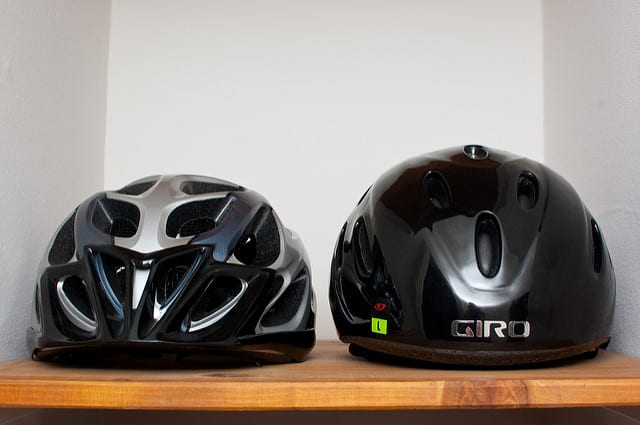
“My head was pounding and I felt a bit dizzy. I still got back up and tried to finish the race, but [I] realized that I only had one ski left.”
This is the head-spinning aftermath St. Olaf alpine skier Madison Valent ’20 experienced following a brutal 40 mph impact with a gate during a ski meet earlier this year. Flying 20 feet in the air and violently cracking her head against the ground, Valent was diagnosed with a concussion – eight months later, she still is not fully recovered.
Even though playing sports has always been a popular and thrilling endeavor for people of all ages, concerns over head injuries, specifically concussions directly resulting from harsh contact sports such as hockey and football, have risen exponentially in recent years. Enhanced awareness and analysis of long-term degenerative brain diseases like Chronic Traumatic Encephalopathy (CTE), has led to adjusting and prioritizing head safety protocol with heightened urgency, especially in more potentially dangerous sports.
Valent is not the only St. Olaf athlete that has sustained a concussion participating in the sport they love. Julie Johnson ’19, former starting goalkeeper of St. Olaf women’s soccer, was forced to leave the team following her fourth concussion during a June contest in which she took a hard cleat to the face. According to her, the injury was the culmination of numerous previous head traumas suffered throughout her career.
“My most recent concussion was definitely affected by the one before when the ball came flying and hit my head at 80 mph,” Johnson said. “For four whole days, I had to stay in a dark room with no stimulation. I took two weeks off of school and was never able to catch up in my classes that semester.”
Concussions usually result from a blow to the head during games or practices, often when they are least expected. Tim Bergeland ’18 became suddenly and unexpectedly concussed earlier this school year when he dove for the ball in an intramural beach volleyball game. The first immediate symptoms athletes experience after the hit are usually temporary dizziness followed by nagging headaches. As time passes, more evident, tangible symptoms, such as abnormal sensitivity to brightness and noise, difficulty concentrating and irregular sleep disturbances emerge.
Athletes who experience concussions all undergo the St. Olaf concussion protocol. St. Olaf’s former head athletic trainer Dan Hage developed a five-stage protocol for concussion recovery, involving multiple exercises and eventual integration back into regular participation on the athletes’ respective team. An athlete remains at one stage until they can successfully complete it without demonstrating any hint of lingering concussion symptoms, the first stage being simple physical exercise and mental stimulus, and the fifth and final test being unlimited participation in a live game.
The middle stages of St. Olaf’s official concussion protocol see the afflicted athlete resting until symptoms settle down. Once stability occurs, they will gradually participate in increasingly strenuous exercises every 24 hours provided no concussion symptoms occur during each respective activity, starting with asymptomatic brain function during light aerobics and moving through stages of sport specific exercises, non-contact training drills and participation in full contact practice.
This deliberate system helped Johnson recover from her third concussion and triumphantly return to the soccer field within 15 days. Valent also described exercises that St. Olaf provided to help strengthen her neck, decrease the pounding headaches and rehabilitate the brain.
One significant effect that concussions have on student athletes in particular is that it interferes with their daily cognitive abilities. Whether it is taking twice as long to finish a test or quiz or three times as long to comprehend a person talking at a faster pace, cognitive processing of common everyday interactions is significantly hindered, which has a noteworthy negative influence on athletes’ academic capabilities.
“I am someone who loves to put a lot of energy into my academics and intellectual explorations, and to be held back because my cognitive process in that was very frustrating to me,” Bergeland said.
Some concussions are obviously worse than others. Johnson’s fourth concussion forced her to quit the team and the sport she had adored for the previous 17 years of her life. Being kept in a dark room with little to no cognitive stimulation for a week, Johnson was not allowed to exercise, study, see light, be in a loud environment, listen to music or even to think too hard. Her only option was to either fall asleep or keep attempting to do so. When people ask about the injury, Johnson did not experience much empathy when she said she had a concussion.
“It feels like you are being a wimp when, really, you are brain damaged,” Johnson said. “I think it is important that people realize that, to take it seriously when it happens because it can affect you forever.”
“The brain quit the team,” she said. “Not me.”
Coming out of this painful experience, athletes are still hopeful about their road to recovery.
“The recovery is slow, but I should celebrate the fact that I am healing,” Bergeland said. “I also think it is one big thing about having a concussion is when other people have concussions I can understand where they are coming from and express my empathy.”
“There are people who are so badly concussed that they can’t even remember who they were anymore,” Johnson said. “I’m lucky that I’m not extremely affected. I’ll be fine, I can still finish college, go to grad school and be a human.”
The effects of concussions are long, painful and frustrating, but Oles who have sustained severe and repeated head trauma and who are left with impacted cognitive abilities are still patiently recovering while remaining optimistic about the future ahead.

